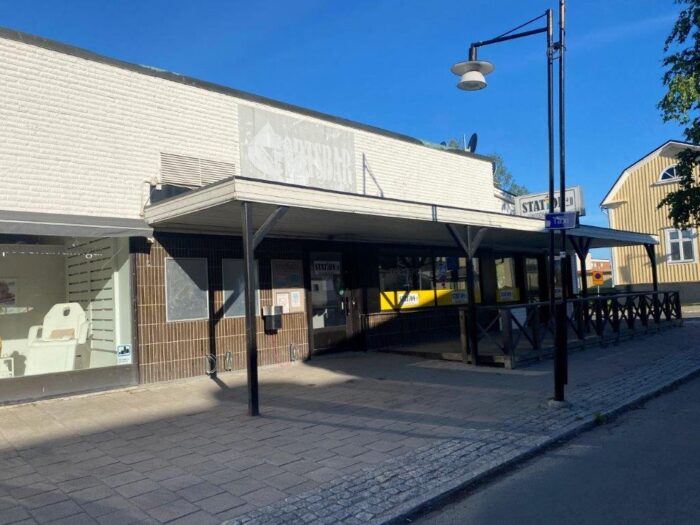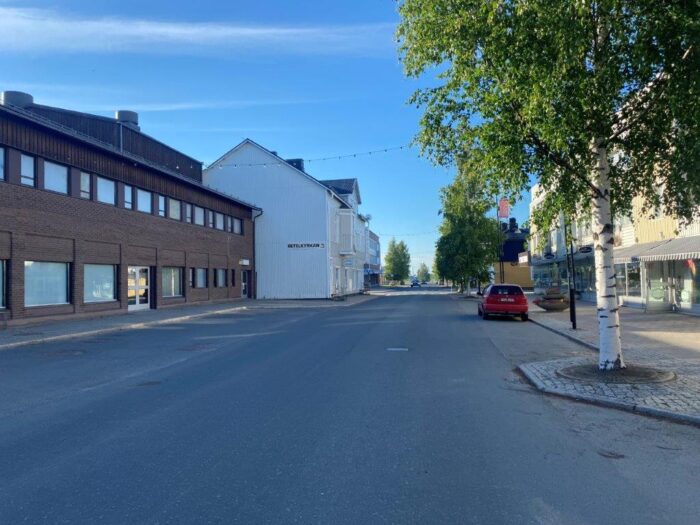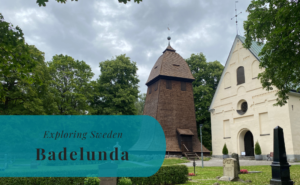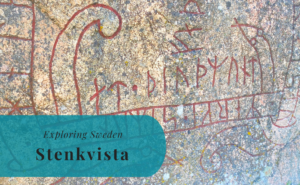Right next to the border between Sweden and Finland you will find the town of Haparanda. Together with its twin city Tornio, just across the border, it creates one of a few urban areas this far north in Europe. Haparanda, at the easternmost point of Sweden, is today a part of Norrbotten County and the seat of its own municipality. It has a population of around 6.600 inhabitants and is probably most famous for having the northernmost IKEA store in the world.
The border between Sweden and Finland applies the free movement of the Nordic Passport Union and later the Schengen Agreement. This makes it possible to walk, bike, or drive across the border and all you will notice is the change of available stores and the language on all signs. The closeness to the border has resulted in Haparanda-Tornio seeing an increase in established commercial areas for border shopping.





A Short History of Haparanda
The history of Haparanda is well intertwined with neighboring Tornio across the border in Finland. Tornio, with a history as a town going back to 1621, was for a long time the main trade location in the northern part of Sweden. This was at a time when Sweden included also what is today Finland. Tornio and the rest of Finland were lost to Russia in 1809. Left on the Swedish side of the river was the small village of Haparanda.
The Establishment of Haparanda
As a result of losing Tornio, Sweden was looking to establish a new town in the area. This happened in 1812 when Karl Johans Stad was founded. The name literally means the town of Karl Johan. The name had its origins with the Swedish crown prince and later King Karl XIV Johan.
The new town had been established about 15 kilometers from the border. This resulted in that it from the beginning had difficulties attracting new inhabitants. Instead, many people chose to move to Haparanda, the village directly at the border with Russian Finland. Haparanda became a market town in 1827 and the town charter of Karl Johans Stad was moved to Haparanda in 1842.
Re-establishing a Cross-Border Relationship
The border trade continued to be important for Haparanda’s development, even during the two world wars. During the wars, the town also became a transit town for the many refugees arriving from Finland. Especially, there was a large number of children who were sent to the safer grounds of Sweden that passed through the town.
It was first during the 20th century that the infrastructure increased cross-border transport. The railway arrived in 1915 and was connected with Finland in 1919. A bridge for cars across the river opened in 1930. Prior to this, only a small wooden bridge had connected Haparanda with Tornio. The two towns have since grown to become even more united. This was made possible by the Nordic Passport Union which was established in 1958. The treaty meant free movement across the border, something that has only been fully limited once since. The Covid-19 pandemic and its restrictions in the 2020s resulted in a temporary hard border between Sweden and Finland.





Things to Do and See
The border really is the main attraction in Haparanda and its accessibility makes it a really interesting place to explore. Walking or biking along the Torne River is another way to spend a few hours. The views are mostly across the border, knowing that Finland or Sweden is always close by. But there are of course a few more places to explore.
The Swedish-Finnish Border
Crossing the border is possible at several locations between Haparanda and Tornio and is by itself something quite interesting to do while visiting. The numerous different signs stating if you are in Sverige or in Suomi is a perfect photo opportunity and some of these are older than others.
EU-Park
There is an ongoing development of a park area right on the border. The park creates a bike- and walk-friendly connection between the center of Haparanda and the center of Tornio.
Haparanda Old Watertower
The Haparanda water tower is one of the main landmarks in the town and has a height of almost 47 meters. It was built in 1920 and was designed by the architect Knut Nordenskjöld (1882-1950).
Haparanda Railway Station
This is the last station along the Swedish railway before entering the only connection from Sweden to eastern Europe. This is due to the fact that this is the only place in Sweden where two different track widths meet. Unlike Sweden, Finland uses the Russian track width for its railroad.





How to Get to Haparanda
- Flights: The closest airport is Kemi-Tornio Airport (KEM), 26 kilometers across the border on the Finnish side, which offers a few domestic flights within Finland. Other options close by are Luleå Airport (LLA) 137 kilometers away and Rovaniemi Airport (RVN) 132 kilometers further north.
- Car: Haparanda is along road E4, right before it crosses the border to Finland.
- Bus: Local buses along the route Ringlinjen connect different areas of Haparanda and neighboring Tornio. There are also regional buses from Länstrafiken Norrbotten that connect Haparanda with the Norrbotten region in Sweden.
- Train: Norrtåg operates trains between Boden and Haparanda.
The driving distance from 5 major Swedish cities, according to Google Maps:
- Stockholm – 1022 kilometers (11 h 10 min)
- Gothenburg – 1372 kilometers (15 h 43 min)
- Malmö – 1630 kilometers (17 h 2 min)
- Linköping – 1217 kilometers (13 h 9 min)
- Kiruna – 359 kilometers (4 h 16 min)
Find out more about other destinations in Sweden by visiting our page Exploring Sweden






